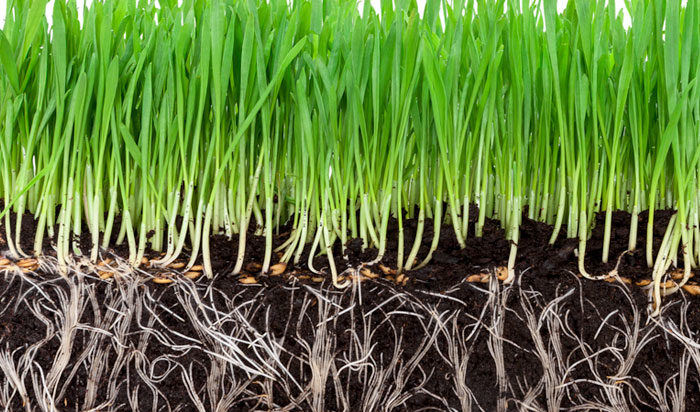Looking for Aeration for Your Tulsa Lawn?
Green Group Oklahoma offers liquid and core aeration services to homeowners in Tulsa, Bixby, Broken Arrow, Sand Springs, and surrounding areas.
Over time, lawns become compacted as we use them, and aeration is the answer to bringing your lawn back to life! At Green Group Oklahoma, we offer both options of core and liquid aeration to better meet the specific needs of your property. Each spring, warm-season grasses in Tulsa greatly benefit from aeration to prepare for a successful growing season. Following your aeration, our knowledgeable team will provide you with aftercare tips and recommendations to ensure you get the best results from our aeration services. Contact us today for a free quote for core or liquid lawn aeration!
What is Aeration?
Lawn aeration is the process of perforating the soil with holes that help alleviate compaction, and better allow air, water, nutrients, and sunlight to reach the root systems. There are multiple types of lawn aeration and Green Group Oklahoma offers both liquid and core aeration. The aeration process also helps to remove any thatch layer that might exist, although some lawns may still require dethatching. Aeration is an important service for both warm and cool season grass types. Warm-season aeration should be completed in the spring, while cool-season grass should be aerated in the fall before overseeding.
Core Aeration
Core aeration is achieved with a machine that pulls small plugs, or cores, of soil from the lawn that are deposited back onto the lawn surface to break down. The removed cores create holes in the soil that encourage roots to expand and promote thicker growth throughout the lawn.
Liquid Aeration
Liquid lawn aeration is achieved using a hose sprayer and a wetting agent that contains humic acid which helps to alleviate soil compaction. Similar to a soil conditioner, liquid aeration penetrates deep into the root zone to break up compaction and allow more air and water to reach grass roots.

Benefits of Lawn Aeration
Core aeration is recommended for more severely compacted soil and the cores contain additional microorganisms that help break down thatch layers. Liquid aeration is a quick and easy option that limits the use of machinery on the lawn. However, both types of aeration offer the same valuable benefits to your lawn’s health and improved growth.
Aerating your lawn allows water, air, and fertilizer to penetrate all the way down to the root zone. This in turn supports root growth, by allowing the roots to grow deeper, creating a more healthy and thicker lawn.
Lawn aeration reduces the chances of having thatch buildup. Thatch makes it harder for your lawn to absorb water and nutrients. It also makes it more susceptible to disease.
Reduces soil compaction, creating more channels for water, air, and nutrients to travel through. Just like humans, your grass needs water, oxygen, and food to thrive.
Helps your lawn thrive through our hot Texas summers and throughout the year. Healthier lawns recover from drought stress better.
Professional Lawn Aeration in Tulsa
Aeration is a great complementary service to our lawn care programs to ensure your Tulsa lawn is happy and healthy year-round.
If your lawn looks like it’s become weak or thin, it’s safe to say it’s time for aeration! Green Group Oklahoma is here to help. With years of experience, we provide homeowners in Tulsa, Bixby, Sand Springs, Broken Arrow, and surrounding areas with peace of mind knowing their lawn is in great hands. In addition to lawn aeration, our weed control and fertilization programs are built to sustain a green, lush lawn all summer long. Our skilled lawn care technicians are trained and equipped to maintain your lawn with the utmost care and protection. Contact us today for a free quote!

